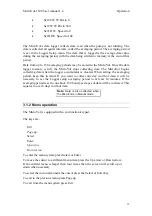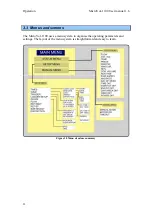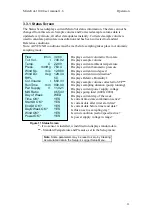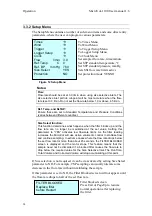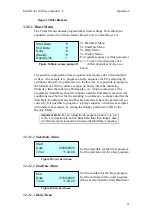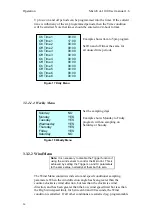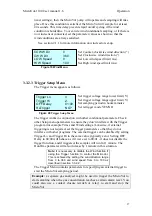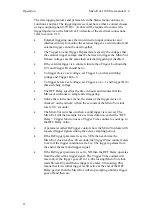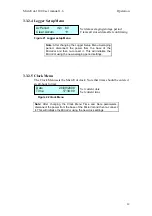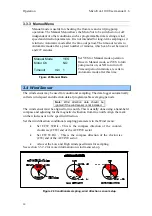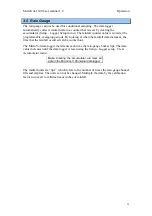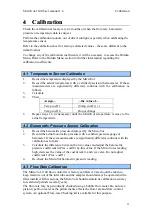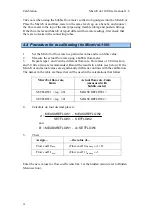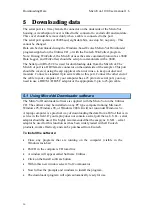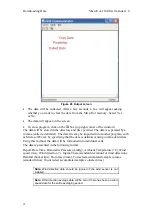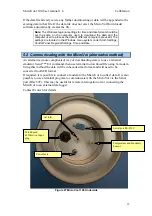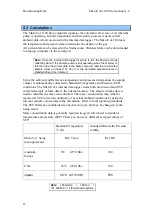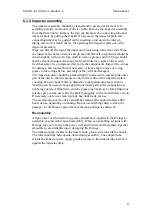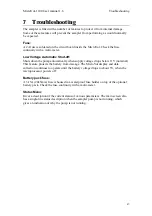
MicroVol-1100 User manual 1.6
Calibration
4
4
4
C
C
C
a
a
a
l
l
l
i
i
i
b
b
b
r
r
r
a
a
a
t
t
t
i
i
i
o
o
o
n
n
n
Check the calibration at least every six months or when the flow-rate, barometric
pressure or temperature data is suspect.
Perform the calibration indoors, out of direct sunlight, especially when calibrating the
temperature sensor.
Refer to the calibration sheet for factory-calibrated values – these are different to the
default values.
To change any of the calibration coefficients, it will be necessary to access the Hidden
Menu. Refer to the Hidden Menu section for further information regarding the
calibration coefficients.
4.1 Temperature Sensor Calibration
1.
Record the temperature displayed by the MicroVol.
2.
Record the actual temperature with a certified precision thermometer. If these
measurements are significantly different, continue with the calibration as
follows:
3.
Calculate
4. Then:
Assign… …the
value
of…
(Temp coeff 1)
÷
x
Temp coeff 1
Temp coeff 0
Do not change
5.
Repeat steps 1-4 (if necessary) until the MicroVol temperature is close to the
actual temperature.
4.2 Barometric Pressure Sensor Calibration
1.
Record the barometric pressure displayed by the MicroVol.
2.
Record the actual barometric pressure with a certified pressure gauge or
barometer. If these measurements are significantly different, continue with the
calibration as follows:
3.
Calculate the difference between the two values and adjust the barometric
pressure coefficient 0 (Pres. coeff0) by this value. If the MicroVol is reading
high, decrease the value of the coefficient 0, and vice versa. Do not adjust
coefficient 1 (Pres. coeff1).
4.
Re-check the MicroVol barometric pressure reading.
4.3 Flow Rate Calibration
The MicroVol-1100 flow-controller is factory calibrated. Care should be taken to
keep moisture out of the inlet tube and the sampler should always be operated with a
filter installed. If this is done, the MicroVol should maintain its calibration accuracy
for extended periods (several years).
The flow-rate may be periodically checked using a bubble flow-meter. Do not use a
piston type flow-meter as the piston inertia affects the flow-rate and flow-control
system. An optional Flow-rate Checking kit is available for this purpose.
33
Содержание LVS-100
Страница 1: ...USER MANUAL metone com LVS 100 Low Volume Air Sampler Version 1 6...
Страница 26: ......
Страница 42: ......
Страница 45: ......
Страница 56: ......
Страница 58: ......
Страница 65: ...This page is intentionally blank...
Страница 67: ......

